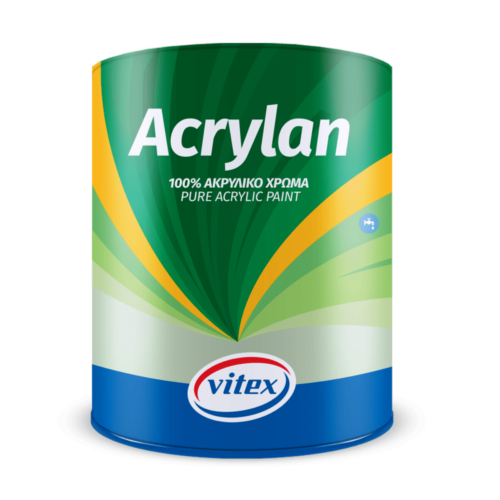Durostick Hydrostop Roof is flexible, white, cementitious one-component roof sealant.
DUROSTICK HYDROSTOP ROOF
Description
- Flexible, spreadable, white mortar, ideal for long-term sealing. It consists of high-strength cement, selected quartz aggregates, acrylic elastomeric resins and is prepared only by the addition of water. It has excellent resistance to sunlight, frost, stagnant water and is water vapor permeable. It has excellent adhesion and bridges capillary cracks. It is ideal for sealing terraces, balconies, swimming pools and tanks. Also suitable for sealing perimeters (walls), against the rising humidity that comes from the bounce of rain. It is classified as a concrete surface protector (c) according to EN 1504-2.
- WAY OF USE
- Surface preparation: In the case of a roof that has not been previously sealed, remove dust, oils, grease, loose spots, moss and algae from the surface. Where it is deemed ‘technically’ necessary to form flat surfaces (smoothing or creasing), prim with D-20 acrylic emulsion and, before it dries, apply DUROSTICK D-6 reinforced cement mortar. Alternatively, we use traditional cement mortar (cement with river sand, in a ratio of 1: 4), reinforced with D-20, in a ratio of 1: 1 with water or DUROMAX in a ratio of 1: 5 with water. If there are dense cracks of 0.5-1mm, prime with AQUAFIX micromolecular stabilizer. When the material is dry, we plaster with HYDROSTOP ROOF locally. At the points of most intense cracks 1-3mm wide, apply a primer of PRIMER-PU polyurethane sealant and seal with DUROFLEX-PU by DUROSTICK. In case the cracks are 3mm wide or more, we repair the problem by pouring injectable epoxy resin D-33 by DUROSTICK.
- Preparation for re-sealing: Detached tarpaulins: Remove them with the help of a wide metal spatula or the use of a flame. Elastomeric sealants disintegrated or detached, are removed with the help of a metal sharp blade and pliers or mechanical means. To locate detached points in the waterproofing layer, invisible, we locate the points using a watering hose, pouring water from a height of 1m all over the surface. We will notice that the sound changes where there are blisters that are not visible. After the points to be dismantled are marked, we remove them with the help of a metal sharp blade and pliers or mechanical means. Old coatings of cementitious sealants but well anchored, after being cleaned with water from mud remnants, are smeared with HYDROSTOP ROOF.
- Application: HYDROSTOP ROOF is applied on thoroughly wetted surfaces, without stagnant water, in 2-3 coats (crosswise), 1mm thick each, with a roll of plastic paints or a mat. Empty the contents of the bag in a clean container with water, in a ratio of 11kg HYDROSTOP ROOF to 3.3-3.5lt water. Mix with a low speed drill with the appropriate mortar stirrer, until a homogeneous mass without lumps is created, so thick that it stands on the mat or on the roll without dripping. The mixture remains working for 2 hours. The second and third coat can be applied even within 2-3 hours without wetting. The application should not be done at temperatures lower than + 5 ° C and higher than + 35 ° C, while we must be sure that it will not rain for the next 12 hours. When applying the material in the summer months, the last layer should be protected from the intense sunshine, applied in the afternoon and wet every 12 hours for the next 24 hours, to avoid premature dehydration.
Additional information
| Brand | Durostick |
|---|---|
| Shape - Color | Cementitious cement – White |
| Toxicity | No |
| Apparent density of dry mortar | 1.02 ± 0.05kg / lt |
| Apparent density of fresh mortar | 1.60 ± 0.05kg / lt |
| Maximum grain diameter | 0.50mm |
| Water requirement | 3.3ltr water in 11kg cement |
| Application temperature | From + 5 ℃ to + 35 ℃ |
| Temperature resistance | From -35 ώς to + 90 ℃ |
| Shelf life | 2 hours |
| Application thickness | 1mm / layer |
| Walkability | After 3 hours |
| DIN 1048 tightness | At water pressure up to 7 Atm (kg / cm²) |
| Reflection | in solar radiation according to ASTM E 903-96 & ASTM G 159-98 82 [SRvis%] |
| SD permeability to CO2 according to EN 1062-6 | SD = 300m |
| Water vapor permeability SD According to EN ISO 7783-2 | SD ≤2m (water vapor permeability class I) |
| Capillary water absorption w according to EN 1062-3 | w≤ 0,02kg / m2 · h0,5 |
| Adhesion to concrete according to EN 1542 | ≥2.80 N / mm² |
| Impact resistance according to EN ISO 6272-1 | 50Nm (class II) |
| Abrasion resistance BCA according to EN 13892-4 | 150 ± 2μm |
| Fire reaction, after application, according to EN 13501-1 | Euroclass F |




